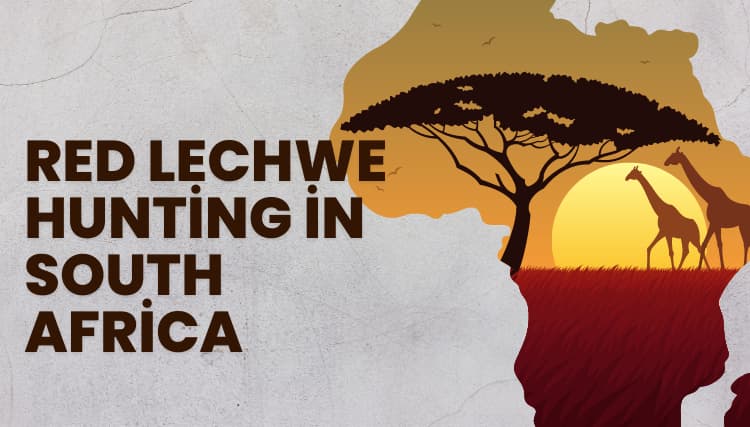
Red Lechwe hunting is a thrilling and challenging activity that has become increasingly popular in South Africa. The Red Lechwe, a unique species of antelope, is known for its long legs and reddish-brown coat, making it a prized trophy for hunters seeking an African adventure.
To successfully hunt Red Lechwe, specialized skills and knowledge of their behavior and habitat are required. These animals are native to the wetlands of southern Africa, where they graze on aquatic plants and can run at high speeds through shallow water.
The South African government regulates Red Lechwe hunting to ensure sustainable practices are followed. This means that only licensed hunters are allowed to participate in the sport, with strict quotas set each year to prevent overhunting.
Hunting Red Lechwe requires patience and skill. It’s important to understand their behavior patterns and movements to track them effectively. Experienced guides can provide invaluable assistance in this regard, helping hunters locate the best spots for stalking these elusive creatures.
For those seeking an authentic African experience, Red Lechwe hunting is a must-try activity. It offers a unique opportunity to explore the beautiful wetlands of southern Africa while testing your hunting skills against one of the region’s most iconic animals.
Red Lechwe Fact Sheet and Fun Facts
Physical Characteristics
The red lechwe is a unique antelope species that have adapted to living in wetland habitats. The males have long spiral horns that can grow up to 70 cm in length, while the females have shorter and straighter horns. They are medium-sized antelopes, with males weighing between 150-200 kg and females weighing between 50-90 kg. Their reddish-brown coat is waterproof, which helps them swim easily through water.
Habitat
Red lechwe are found mainly in Botswana, Namibia, and Zambia. They prefer living in floodplains, marshes, and grasslands near rivers or lakes. They are semi-aquatic animals that can swim for long distances in water and run at high speeds on land.
Diet
As herbivores, red lechwe feed mainly on grasses and aquatic plants such as papyrus reeds. Their diet varies depending on the season; during the dry season when food is scarce, they eat more leaves than grass.
Behavior
Red lechwe are social animals that live in herds of up to hundreds of individuals. Males establish territories during mating season by marking their area with urine or dung piles. During mating season males compete for females by displaying their strength through posturing or fighting.
Conservation Status
The population of red lechwe is currently stable but declining due to habitat loss caused by human activities such as farming, dam construction, and hunting. In some areas where they live near human settlements, they also face threats from predators such as lions and hyenas.
Male vs Female Lechwe: Vital Statistics and Differences
Male red lechwes are larger in body size compared to females. This difference in size is one of the most significant differences between male and female red lechwes. Male red lechwes can grow up to 1.3 meters tall, while females usually grow up to 1 meter tall. Males weigh around 200 kg, while females weigh around 120 kg.
The daily rates for hunting male red lechwes are usually higher due to their size and trophy quality. Hunting a male red lechwe requires more skill and experience than hunting a female because they are bigger and stronger. A skilled hunter will need to be able to track the animal effectively and take an accurate shot from a distance that doesn’t put them at risk.
Female red lechwes have longer horns compared to males. While males have thicker horns with more mass, females’ horns tend to be longer and thinner. Female horns can grow up to 85 cm long, while males’ horns only reach about 70 cm in length.
Males have a darker coat color compared to females. The dark brown or chestnut coloration of male red lechwes helps them blend into their environment better than the lighter-colored females. The darker coat also makes it easier for hunters to spot them from afar.
Types of Antelope Hunting: Spiral Horned, Small, and Large
Spiral Horned Antelope Hunting
Spiral-horned antelopes are known for their long and curved horns that can grow up to several feet in length. These antelopes belong to the Bovidae family, which includes species such as the kudu, nyala, bushbuck, and eland. Spiral-horned antelope hunting is a popular activity among hunters due to the challenge it presents.
Kudu hunting is one of the most popular spiral-horned antelope hunts. The kudu is a large antelope species that can weigh up to 600 pounds and stand over five feet tall at the shoulder. They are known for their impressive horns that can grow up to six feet in length. Kudus are elusive animals that inhabit dense forests and thickets, making them difficult to hunt.
Nyala hunting is another popular spiral-horned antelope hunt. Nyala bulls have long spiraling horns with ivory tips that can grow up to 32 inches in length. These beautiful animals are found in South Africa’s dense forests and riverine thickets, where they feed on leaves and fruits.
Bushbuck hunting is also a favorite among hunters who enjoy spiral-horned antelope hunts. Bushbucks have short horns that curve backward with sharp tips, making them challenging prey for hunters. They usually inhabit dense forests and riverine thickets near water sources.
Small Antelope Hunting
Small antelopes carry shorter horns that are usually less than a foot long. These animals belong to different species such as duikers, steenboks, dik-diks, and klipspringers.
Duiker hunting is a popular small antelope hunt due to its challenging nature. Duikers are small-sized antelopes with short straight horns or no visible horns at all. They inhabit dense forests and thickets near water sources but can also be found in savannas and grasslands.
Steenbok hunting is another popular small antelope hunt. Steenboks are tiny antelopes that weigh between 20 to 35 pounds and stand about two feet tall at the shoulder. They have short straight horns that grow up to six inches in length. These animals inhabit savannas, grasslands, and semi-deserts.
Dik-dik hunting is a unique small antelope hunt due to the animal’s size and behavior. Dik-diks are tiny antelopes that weigh between six to 15 pounds and stand about one foot tall at the shoulder. They have short straight horns that grow up to four inches in length. These animals usually inhabit arid regions and feed on leaves, fruits, and flowers.
Large Antelope Hunting
Large antelopes belong to different species and carry different horn lengths such as eland, gemsbok, hartebeest, impala, springbok, waterbuck, and wildebeest.
Eland hunting is a popular large antelope hunt due to the animal’s size and strength. Elands are the largest of all African antelopes with bulls weighing up to 2,000 pounds and standing over six feet tall at the shoulder. They have long spiral-shaped horns that can grow up to four feet in length. Elands inhabit savannas, grasslands, and woodlands but can also be found in deserts.
Gemsbok hunting is another popular large antelope hunt among hunters who enjoy challenging hunts. Gemsboks are desert-adapted animals with long straight horns that can grow up to three feet in length. They inhabit arid regions where they feed on tough grasses and shrubs.
Hartebeest hunting is a favorite among hunters who enjoy fast-paced hunts. Hartebeests are medium-sized antelopes with curved horns that sweep backward from their forehead. They usually inhabit open plains where they feed on grasses.
Impala hunting is a popular large antelope hunt due to the animal’s agility and speed. Impalas are medium-sized antelopes with slender horns that can grow up to 36 inches in length. They inhabit savannas, woodlands, and grasslands where they feed on leaves and fruits.
Springbok hunting is another popular large antelope hunt among hunters who enjoy challenging hunts. Springboks are small-sized antelopes with curved horns that sweep backward from their forehead. They inhabit open plains where they feed on grasses.
Waterbuck hunting is a favorite among hunters who enjoy water-based hunts. Waterbucks are medium-sized antelopes with long spiral-shaped horns that can grow up to three feet in length. They usually inhabit riverine forests and savannas near water sources.
Wildebeest hunting is a popular large antelope hunt due to the animal’s size and strength. Wildebeests are medium-sized antelopes with curved horns that sweep backward from their forehead. They usually inhabit open plains where they feed on grasses.
Caliber, Shot Distance, and Where to Hunt Red Lechwe
Choosing the Right Caliber for Red Lechwe Hunting
Choosing the right caliber is crucial. The wrong choice can result in a wounded animal and an unsuccessful hunt. Magnums are a popular choice among hunters due to their power and accuracy.
Magnums are rifles that use cartridges with larger powder charges than standard cartridges. This results in higher bullet velocities and greater energy upon impact. Magnum calibers such as .300 Win Mag, .338 Lapua, and .375 H&H offer excellent performance for hunting red lechwe.
However, it’s important to note that magnums can be overkill for smaller games or when hunting at shorter distances. They also tend to have more recoil, which can affect accuracy if not properly managed.
Ultimately, the best caliber for red lechwe hunting depends on personal preference and shooting ability. It’s recommended to test out different calibers at a shooting range before heading out on a hunt.
Practicing Shooting Distance for Red Lechwe
The shooting distance for red lechwe can vary greatly depending on the terrain and location of the animal. It’s important to practice shooting at different ranges to ensure accuracy during a hunt.
Long-range shots may require specialized equipment such as rangefinders or scopes with bullet drop compensators. Hunters should also be aware of wind speed and direction when taking long-range shots.
On the other hand, close-range shots require quick reflexes and accurate aim. Hunters should practice shooting from various positions such as standing, kneeling, or prone positions.
Quality Ammunition for Clean Kills
Using quality ammunition is essential for ensuring a clean kill and preventing unnecessary suffering of the animal. It’s recommended to use premium bullets designed specifically for hunting big games such as red lechwe.
Premium bullets offer better weight retention upon impact, resulting in deeper penetration and greater tissue damage. They also tend to expand more reliably than standard bullets, which can prevent over-penetration and minimize the risk of injuring other animals.
In addition to using quality ammunition, hunters should also aim for vital organs such as the heart or lungs to ensure a quick and humane kill.
Hunting Methods for Red Lechwe and Other Game
Stalking, Still Hunting, and Safari-Style Hunting
Hunting red lechwe and other games in South Africa can be an exhilarating experience. There are various methods of hunting available to hunters, including stalking, still hunting, and safari-style hunting. Stalking involves quietly following the animal on foot until you are close enough for a shot. This method requires patience and skill as it can take hours or even days to get within range of the animal.
Still hunting is another popular method of hunting in South Africa. It involves finding a good vantage point and waiting for the animal to come into view. This method requires patience and knowledge of the animal’s habits and movements.
Safari-style hunting is a more traditional form of hunting that involves tracking animals from a vehicle or horseback. This method is popular with hunters who want to cover more ground in search of their prey.
Prices for Hunting Red Lechwe and Other Game
The prices for hunting red lechwe and other game may vary depending on several factors such as the outfitter, camp or lodge, ranch, or land where the hunt takes place. The cost may also depend on whether you choose to hunt with a rifle or bow.
When planning your hunt, it’s essential to consider all costs associated with your trip carefully. You should research different outfitters’ prices before making any decisions about where to book your hunt.
Tips for Hunting Red Lechwe
Red lechwe can be identified by their dark markings and distinctive forelegs which are longer than their front legs. They are often found near reed beds and tend to be more active during the early morning or late afternoon when the heat is less intense.
When hunting red lechwe in South Africa, it’s important to be aware of nursing herds and avoid shooting animals with young offspring. Shooting animals with young offspring could lead to orphaned animals that cannot survive without their mothers’ milk.
Shot Placement for Successful Lechwe Hunting
Lethal and ethical hunting is the ultimate goal of every responsible hunter. To achieve this, shot placement is crucial. hunters must aim for the lung shot to ensure a quick and humane kill. In this section, we will discuss the importance of shot placement and provide tips on how you can successfully hit your target.
Aim for the Lung Shot
The lung shot is one of the most effective shots when hunting red lechwe in South Africa. It involves aiming at the chest cavity, just behind the front legs.
The lungs are vital organs that are responsible for oxygenating blood and removing carbon dioxide from an animal’s body. Hitting both lungs will cause rapid blood loss and lead to quick death.
Using an Expanding Bullet
An expanding bullet can increase your chances of making a successful shot when hunting red lechwe in South Africa. An expanding bullet expands upon impact with an animal, causing more damage than a non-expanding bullet would do. This type of bullet also reduces the risk of over-penetration, which can result in a wounded animal escaping.
Look for Markings on the Animal’s Body
Hunters should look for markings on an animal’s body to determine where to aim their shots. Red lechwes have a distinctive white ring around their rump, which makes them easy to identify from other antelopes. The heart lies behind the front leg, while the lungs extend up towards the spine.
Shots to the Neck are Not Recommended
Although some hunters may be tempted to take neck shots because they offer a larger target area than lung shots, they are not recommended when hunting red lechwe in South Africa. A missed neck shot can result in wounding an animal or even missing it entirely.
Reasonable Range for Heart Shots
According to expert hunter Nick Bowker, a reasonable range for a heart shot is within 200 yards. The heart shot involves aiming directly behind the front leg at the center of the chest cavity.
This shot is effective when hunting red lechwe in South Africa because it causes rapid blood loss and leads to a quick death.
Trophy Judgement, Rifle Caliber, and Best Shot Placement for Red Lechwe
Trophy Judgement: A Crucial Aspect of Red Lechwe Hunting
Trophy judgment is a crucial aspect that hunters should keep in mind. The beauty and maturity of the trophy are important factors that determine the success of the hunt. Hunters need to aim for a mature and beautiful trophy, as this not only enhances their hunting experience but also ensures the sustainability of the species.
A mature red lechwe bull has long spiraled horns that curve backward from its head and can grow up to 28 inches in length. On the other hand, female red lechwes have shorter horns and are smaller in size. When judging a trophy, hunters should look for these characteristics and ensure that they are aiming at a mature bull with long spiraled horns.
Rifle Caliber: Choosing the Right Tool for Red Lechwe Hunting
Choosing the right rifle caliber is crucial it is recommended to use a rifle caliber of .270 or larger when hunting these animals. This ensures that you have enough stopping power to take down your prey effectively.
Moreover, using a high-powered rifle with an appropriate bullet weight can help prevent damage to the trophy. When choosing ammunition, hunters should opt for bullets designed for big game hunting with high sectional density and penetration capabilities.
Best Shot Placement: Ensuring Clean Kill Without Damaging Trophy
Shot placement is another important factor when it comes to red lechwe hunting. Hunters should aim for behind-the-shoulder shot placement as this ensures a clean kill without damaging the trophy.
The vital organs such as the lungs and heart lie behind the shoulder blade, making this area an ideal target spot. However, hunters should avoid shooting too far back towards the liver or stomach area as this may result in meat spoilage or damage to other parts of the animal’s body.
Trophy Fee: Understanding the Cost of Red Lechwe Hunting
Red lechwe hunting typically involves a trophy fee, which varies depending on the size and quality of the trophy. The trophy fee is an additional cost that hunters need to pay on top of their daily rate and other expenses.
Hunters need to understand the costs involved in red lechwe hunting and plan accordingly. Moreover, hunters must follow ethical hunting practices and regulations when hunting red lechwe in South Africa.
Areas in South Africa for Red Lechwe and Tsessebe Hunting
Eastern Cape: A Popular Destination for Red Lechwe and Tsessebe Hunting
The Eastern Cape is a popular destination for red lechwe and tsessebe hunting in South Africa. The swamps in the Eastern Cape are ideal for red lechwe hunting due to the abundance of water and vegetation.
These areas provide a perfect habitat for red lechwe, as they require both water and grasslands to thrive. The open savannah country is another area in South Africa where red lechwe and tsessebe can be found and hunted. This type of terrain provides ample opportunities for hunters to spot these animals from afar.
Rivers are important areas for red lechwe hunting as they provide a source of water and attract these animals. The flood plains along rivers are also great areas for red lechwe hunting as they provide an abundance of food and water. These areas are particularly attractive during the rainy season when the flood plains become lush with vegetation, providing an excellent feeding ground for these animals.
Limpopo, Mpumalanga, and KwaZulu-Natal: Other Areas for Red Lechwe Hunting
Apart from the Eastern Cape, there are other areas in South Africa where red lechwe and tsessebe hunting can be done. Limpopo is one such area that offers excellent opportunities for hunters looking to bag a trophy animal. The region boasts vast expanses of bushveld that provide ample cover for these elusive creatures.
Mpumalanga is another area that offers excellent opportunities for hunters looking to bag a trophy animal. The region boasts some of the most picturesque landscapes in South Africa, making it an ideal destination for those who appreciate natural beauty.
KwaZulu-Natal is yet another area that offers excellent opportunities for hunters looking to bag a trophy animal. The region boasts some of the most diverse wildlife populations in South Africa, making it an ideal destination for those looking to experience the thrill of the hunt.
Red Lechwe Hunting in South Africa
In conclusion, red lechwe hunting in South Africa is an experience that every hunter should have. With its unique color and spiral horns, the male red lechwe is a prized trophy for hunters. The free state area of South Africa offers some of the best opportunities to hunt this magnificent animal.
When hunting red lechwe, it’s important to consider the caliber of your rifle and shot distance. A well-placed shot will ensure a successful hunt and minimize suffering for the animal. Hunting methods such as spot-and-stalk or safari-style hunts are popular options for hunting red lechwe.
Trophy judgment is also an important aspect of hunting red lechwe. It’s crucial to know what to look for when selecting a trophy animal, including horn length and thickness. Understanding the best shot placement for red lechwe can increase your chances of success.
South Africa isn’t the only country where you can hunt red lechwe – Botswana and Namibia also offer opportunities for this type of hunting. However, Somerby Safaris in East London, South Africa is known for its exceptional guided hunts.
Late afternoon hunts are recommended as this is when red lechwe are most active. Their unique reddish-brown color makes them easy to spot against the green grasslands they inhabit.
- Red Lechwe Hunting in Texas: Prices & Packages
- Red Lechwe Antelope: One of the Most Eye-catching Animals in Africa
Referans: Red Lechwe Hunting in South Africa
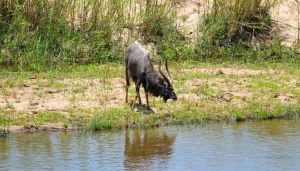
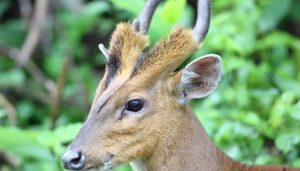
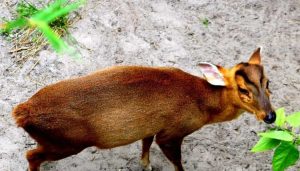
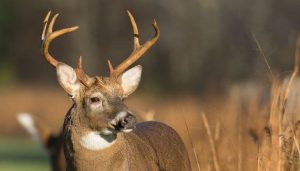
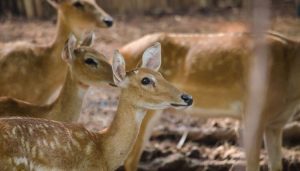
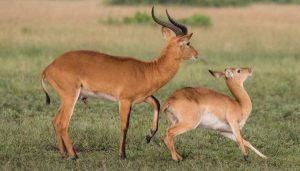
Leave a Reply